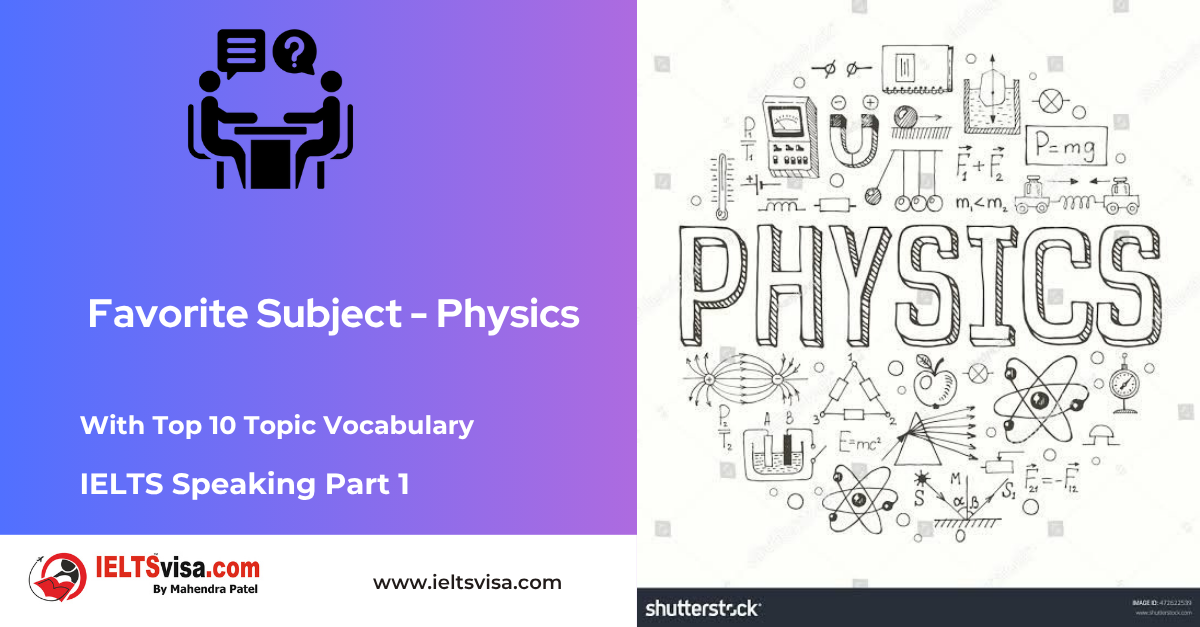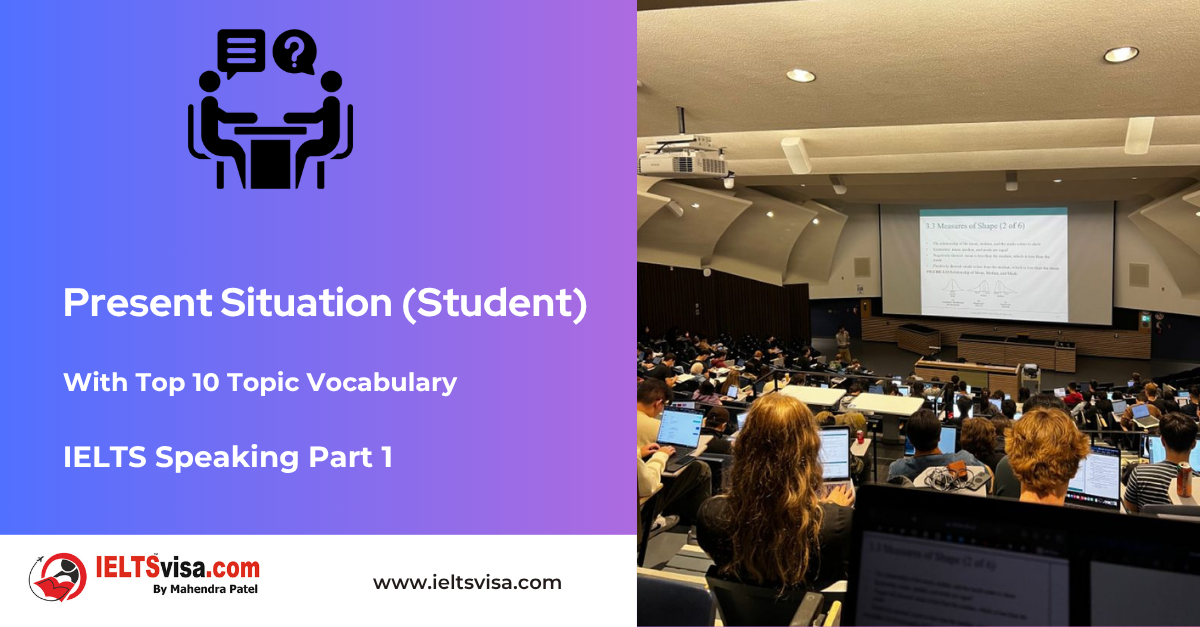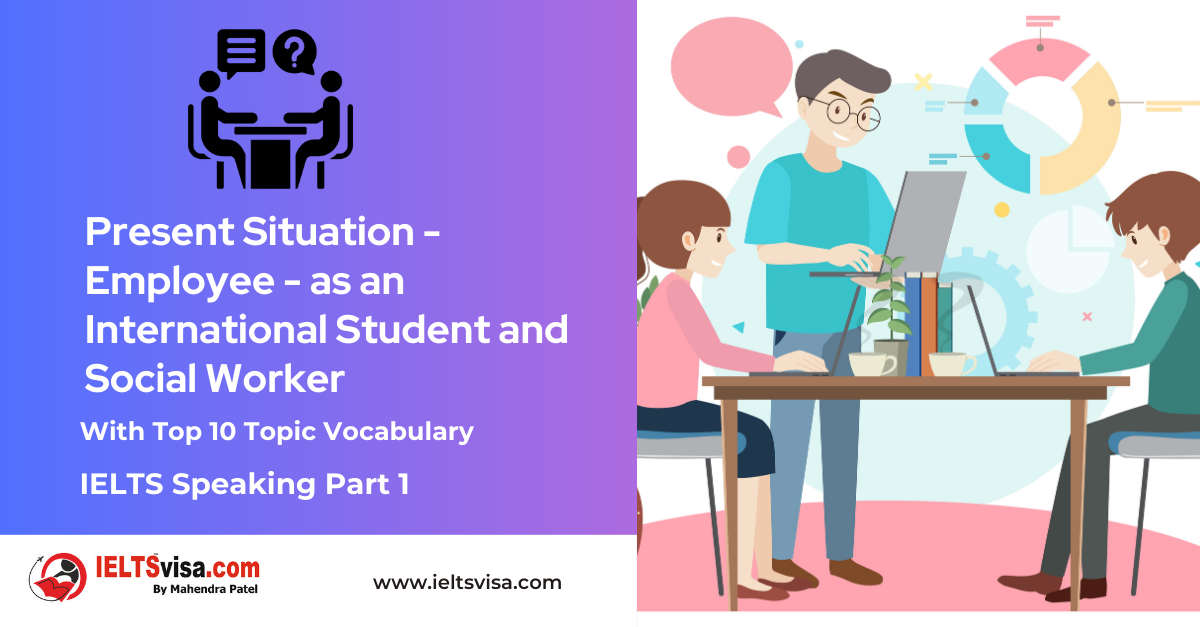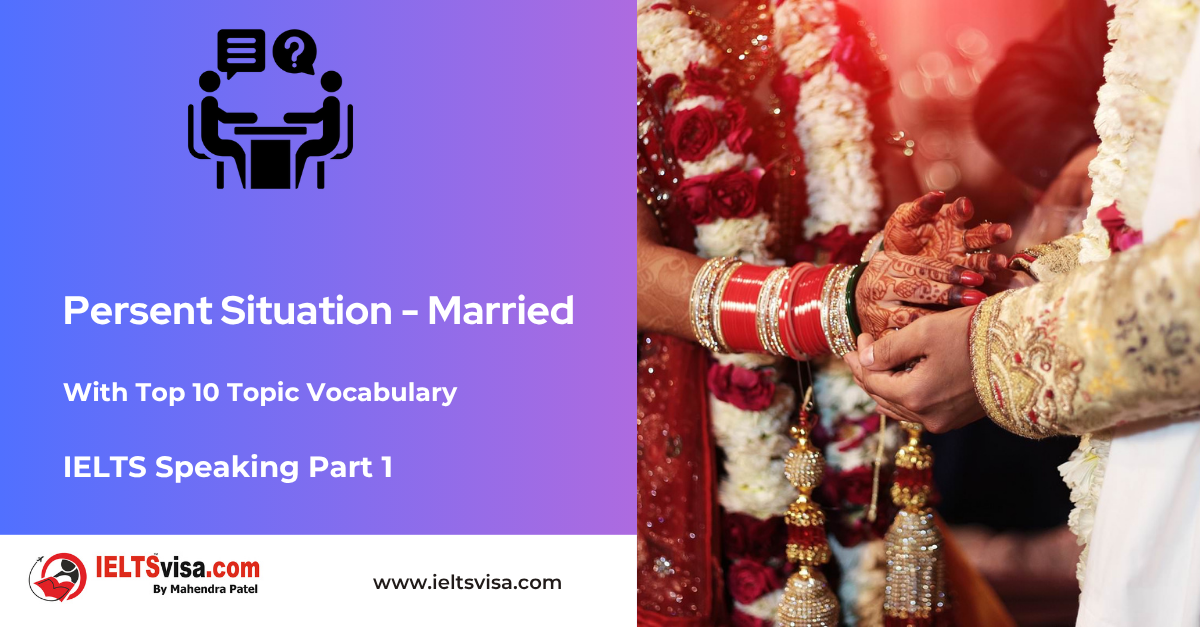A Historical Place You Have Visited – Red Fort, India
IELTS Speaking Part 2 (Cue Card) Part 3: Follow-Up Questions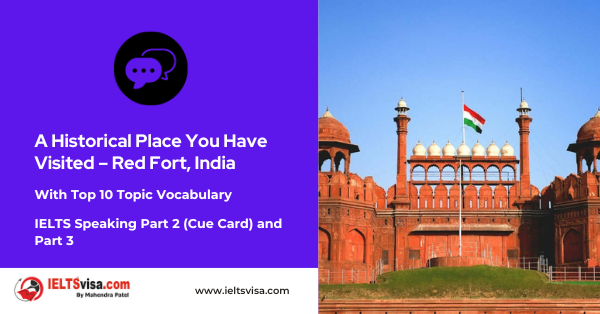
A Historical Place You Have Visited – Red Fort, India
🗂️ Part 2 – Cue Card
Describe a historical place you have visited.
You should say:
- What the place is
- Where it is located
- What you saw there
And explain why you found it interesting.
🗣️ Sample Answer
One of the most fascinating historical places I have visited is the Red Fort in Delhi, India. It is a massive red sandstone fortress built in the 17th century by the Mughal Emperor Shah Jahan. I went there during a school trip when I was in grade 11.
The Red Fort is a symbol of India’s rich history and is recognised as a UNESCO World Heritage Site. The moment we entered the fort, I was amazed by its grand architecture, huge gates, beautifully carved halls, and gardens. The main attractions I remember were the Diwan-i-Aam (Hall of Public Audience), Diwan-i-Khas (Hall of Private Audience), and the Moti Masjid (Pearl Mosque).
There was also a museum inside that displayed ancient weapons, artefacts, and clothes from the Mughal period. Our guide shared many interesting stories about the royal lifestyle, political history, and the independence movement. One of the most memorable parts of the visit was imagining how kings, queens, and ministers used to live and make decisions in those very halls.
What made the experience even more special was the fact that every year, on India’s Independence Day, the Prime Minister addresses the nation from this fort. Visiting it gave me a sense of pride and a deeper connection to Indian history.
🔁 Part 3: Follow-Up Questions
1. Why do people visit historical places?
People often visit historical places to learn about the past, experience different cultures, and appreciate ancient art and architecture. These places help us understand how our society has evolved.
2. What can children learn from visiting historical sites?
Visiting such places brings history to life. It makes learning more interactive and helps children develop curiosity, critical thinking, and respect for cultural heritage.
3. Do you think the government should invest more in preserving historical buildings?
Yes, definitely. These sites are national treasures. If maintained well, they can attract tourism, generate revenue, and educate future generations about the country’s legacy.
4. Are people in your country interested in history?
Yes, but mostly older people and students preparing for competitive exams. Many young people find history boring, though that changes when they visit places and experience it visually.
5. What are the differences between old buildings and modern ones?
Old buildings were designed with artistic details, hand-made carvings, and cultural symbolism. Modern buildings focus more on functionality, speed of construction, and technology.
6. What are the benefits of tourism at historical places?
Tourism at heritage sites creates employment, supports local businesses, and raises awareness about cultural preservation. It also helps fund maintenance projects.
7. Do you think people should pay to visit historical places?
Yes, a small fee is reasonable if it goes toward maintenance and staff salaries. However, it should be affordable for locals and students.
8. What challenges do historical monuments face today?
Pollution, urban encroachment, lack of funds, and careless behaviour by visitors are major threats. Climate change is also affecting ancient structures.
9. Should students learn history through textbooks or field trips?
Both are important, but field trips provide a multi-sensory experience that makes learning more impactful and memorable.
10. How can technology help in preserving historical places?
Technologies such as 3D scanning, virtual reality tours, and AI monitoring can help restore and protect historical buildings while making them more accessible to a wider audience.
Top 10 Topic Vocabulary – A Historical Place You Have Visited – Red Fort, India
|
Vocabulary |
Type |
Meaning |
Synonyms |
Antonyms |
Word Family |
Example Sentence |
|
Fortress |
Noun |
A large fortified building |
Citadel, stronghold |
Cottage, hut |
Fortify, fortified |
The Red Fort is one of India’s most famous fortresses. |
|
Heritage |
Noun |
Cultural traditions passed through time |
Legacy, tradition |
Loss |
Inherit, inherited |
Preserving heritage sites is important. |
|
Artifact |
Noun |
A historical object made by humans |
Relic, antique |
Modern item |
— |
The museum displayed ancient artefacts. |
|
Architecture |
Noun |
The art of designing buildings |
Design, structure |
— |
Architect, architectural |
Mughal architecture is rich in detail. |
|
Carving |
Noun |
Decorative design cut into stone/wood |
Engraving, sculpture |
— |
Carve, carved |
The stone carvings were beautiful. |
|
Symbolic |
Adj |
Representing something deeper |
Figurative, emblematic |
Literal |
Symbol, symbolise |
The Red Fort is symbolic of Indian freedom. |
|
Monument |
Noun |
Structure built to commemorate history |
Memorial, statue |
— |
Monumental |
The Taj Mahal is a world-famous monument. |
|
Restoration |
Noun |
Returning something to its original state |
Repair, renovation |
Damage |
Restore, restored |
The building needs restoration. |
|
Historical |
Adj |
Related to history |
Ancient, old |
Modern |
History, historically |
Visiting historical places is educational. |
|
Legacy |
Noun |
What is left behind from the past |
Inheritance, heritage |
Disregard |
— |
The Mughal legacy can be seen in Delhi’s monuments. |

Our Books
Master IELTS Speaking Part 1
IELTS Writing Task 1 Book
IELTS Writing Task 2 Book
Practice IELTS Other Modules
IELTS Listening
The IELTS Listening test assesses how well you can understand spoken English in various contexts. It lasts about 30 minutes and is divided into four sections with a total of 40 questions. The listening tasks become increasingly difficult as the test progresses.
IELTS Academic Reading
The IELTS Academic Reading section assesses your ability to understand and interpret a variety of texts in academic settings. It is designed to evaluate a range of reading skills, including skimming for gist, reading for main ideas, reading for detail, understanding inferences, and recognizing a writer's opinions and arguments.
IELTS Speaking
The IELTS Speaking test assesses your ability to communicate in English on everyday topics. It lasts 11-14 minutes and consists of three parts: introduction, cue card, and a discussion based on the cue card topic.
IELTS General Reading
IELTS General Reading tests your ability to understand and interpret various types of texts. Here are some key areas and types of content you can expect to encounter in the reading section, along with tips for effective preparation.
IELTS Academic Writing Task 1
In IELTS Academic Writing Task 1, you are presented with a visual representation of information, such as graphs, charts, tables, or diagrams, and you are required to summarize, compare, or explain the data in your own words.
IELTS General Writing Task 1
In IELTS General Writing Task 1, you are required to write a letter based on a given situation. The letter can be formal, semi-formal, or informal, depending on the prompt. Here’s a breakdown of the key components to include in your letter
IELTS Academic Writing Task 2
In IELTS Academic Writing Task 2, you are required to write an essay in response to a question or topic. Here’s a guide to help you understand the essential elements of this task
IELTS Exam Tips
To succeed in the IELTS exam, practice regularly, familiarize yourself with the test format, improve your vocabulary, develop time management skills, and take mock tests to build confidence.
Grammer for IELTS
Grammar is the foundation of effective communication in English. Understanding tense usage, subject-verb agreement, and sentence structure enhances clarity and coherence in writing and speaking.
Vocabulary for IELTS
Vocabulary plays a crucial role in the IELTS (International English Language Testing System) exam, especially in the Speaking and Writing sections. Here’s an overview of why vocabulary is important and how it impacts your performance
RECENT IELTS SAMPLES QUESTIONS AND ANSWERS
IELTS Speaking Part 1 – Favourite Sujbect – Physics
IELTS Speaking Part 1 - Favourite Sujbect - Physics Q: What is your favourite subject? A: My favourite subject...
IELTS Speaking Part 1 – Present Situation (Student)
IELTS Speaking Part 1 - Present Situation (Student) Q1: Are you a student or do you work?A: I’m a full-time...
IELTS Speaking Part 1 – Present Situation – Employee – as an International Student and Social Worker
IELTS Speaking Part 1 - Present Situation - Employee - as an International Student and Social Worker Q1: Are...
IELTS Speaking Part 1 – Persent Situation – Employee- as an Electric Engineer
IELTS Speaking Part 1 - Persent Situation - Employee- as an Electric Engineer Q1: What do you do for a...
IELTS Speaking Part 1 – Persent Situation – Employee – as an Software Engineer
IELTS Speaking Part 1 - Persent Situation - Employee - as an Software Engineer Q1: What do you do for a...
IELTS Speaking Part 1 – Persent Situation – Married
IELTS Speaking Part 1 - Persent Situation - Married Q1: Are you married?A: Yes, I am married. My spouse and I...

